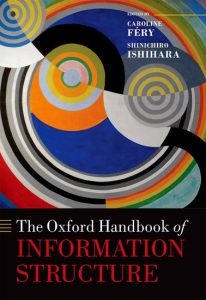 Abriss der Sprachwissenschaft : Heymann Steinthal , Franz Misteli. Published in 1871.
Abriss der Sprachwissenschaft : Heymann Steinthal , Franz Misteli. Published in 1871.
“Von der Sprache ist schon bemerkt, dass sie so wenig gelehrt und gelernt werden kann, wie Sehen und Hören. Wer hat wohl je bemerkt, dass man Kinder sprechen gelehrt hätte? Vielleicht aber hat Mancher schon beachtet, wie vergeblich das Bemühen ist, das man wohl zuweilen anstellt, das Kind zu lehren. Mit Gewissheit aber setze ich voraus, dass Jeder, wer Gelegenheit gehabt hat, ein Kind vom zweiten bis zum vierten Lebensjahre zu beobachten, oft genug darüber erstaunt war, wie urplötzlich das Kind ein Wort oder eine Wortform gebraucht hat. Selten weiss man, woher das Kind das hat. Es hat es ergriffen bei irgend einer Gelegenheit; und ergreifen heisst erzeugen. — Man sollte also gar nicht vom Lernen der Sprache bei Kindern reden. Denn wo keine Lehre, da ist kein Lernen. Nur was der Gärtner mit Samen tut, aus dem er Pflanzen ziehen will, nur das tun wir mit unsern Kindern, um sie zur Sprache zu bringen: wir bringen sie in die nötigen Bedingungen geistigen Wachstums, nämlich in die menschliche Gesellschaft. Aber so wenig der Gärtner wachsen macht, so wenig machen, lehren, wir das Kind sprechen; nach dem Gesetze, dort der Natur, hier des Geistes, entsteht dort die Blume, hier die Sprache im Bewusstsein des Kindes.”
My translation: “Language, as I remarked earlier, is like seeing and hearing in that it can’t be taught or learned. Who has ever seen anybody teach language to a child? Some of you may have experienced how hopeless it is to teach language to children, as has been tried occasionally. I am sure that anybody who has ever had the opportunity to observe a child between the age of two and four was surprised about the sudden use of a word or a word form. We rarely know where the child got it from. The child apprehended it on some occasion or other; and ‘apprehending’ means creating. – We thus shouldn’t talk about learning of language by children. If there isn’t any teaching, there isn’t any learning either. What we do with children to lead them towards language is exactly what a gardener does with a seed from which he wants to produce a plant: we provide them with the necessary conditions for growth, namely human society. The gardener doesn’t truly make plants grow. Likewise, we do not teach children how to speak. A flower grows following the laws of nature. In the same way, language is generated in the consciousness of a child following the laws of the mind.”




